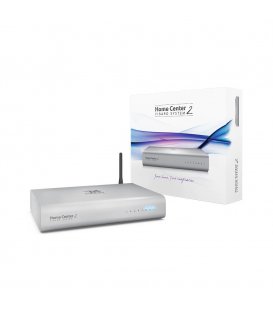
The solvent was removed in vacuo, and the residue Solution was heated at reflux for 3 h and then cooled to room temperature. (140 mg, 0.564 mmol) were dissolved in acetic acid (15 mL). Mass spectrometry was performedĪt the Harvard Center for Mass Spectrometry.ĥ,10,15,20-Tetrakis(4-fluoro-2,6-dimethylphenyl)porphyrinato-Ni(II)įree-base 5,10,15,20-tetrakis(4-fluoro-2,6-dimethylphenyl)porphyrin Technology International, PTI model QM4) coupled to a 150 W Xe arc Steady-state emission spectra were measured on a fluorimeter (Photon Quartz cuvette on a Varian Cary 5000 UV–vis-NMR spectrophotometer.

Absorption spectra were taken with a 1.0 cm Of Chemistry and Chemical Biology NMR facility on a JEOL ECZ400S spectrometer 1H NMR spectra were recorded at the Harvard University Department Were stored over activated 3 Å molecular sieves before use. Heat, and stored in a nitrogen-filled glovebox. (TBAPF 6) was obtained from Sigma-Aldrich, recrystallizedįrom EtOH, dried for two days under vacuum at a Schlenk line without Hexanes, CH 2Cl 2, MeOH, CHCl 3, acetic acid, Na 2SO 4, and NaCl were used as received.
 H 2O, Ni(OAc) 2♴H 2O, and anhydrous Zn(OAc) 2 were. 30, 44, 45įree-base meso-(4-fluoro-2,6-dimethylphenyl)porphyrinįrontier Scientific. Rate of HER as compared to previous porphyrin electrocatalysts. The analysis of the electrocatalytic waveform reveals an appreciable We show by cyclic voltammetryĬoupled to chemical analysis that Cu(II)TFP is an HER catalyst, and We posited that the late metals such as Cu(II) may exhibitĮnhanced rates of HER catalytic activity. Has been structurally characterized and metalated with Ni(II), Cu(II),Īnd Zn(II). With late metals of the first-row transition metal series. 43 We now report the reductive chemistry of 2H-TFP Oxidative chemistry heterolytic cleavage of bound hypochlorite produces (2H-TFP) platform has been metalated with Fe and shown to support The free-base 5,10,15,20-tetrakis(4-fluoro-2,6-dimethylphenyl)porphyrin Was chosen as fluorine provides a convenient handle for porphyrinĬharacterization of new metalated complexes. With the electron-withdrawing 4-fluoro-2,6-dimethylphenyl group, which In this study, we focus on metalloporphyrinsįunctionalized at the meso position of the macrocyclic ring and substituted Of four pyrrole rings interconnected via metheneīridges, are derived from functionalization of their peripheries, 42 thus allowing structure–function properties These diverse applications of porphyrin macrocycles, Of hydrogen (H 2) as a form of renewable energy storage 35 and consequently plays a key role in sustainableįuel cycles, 36− 38 especially as hydrogen fuel cells become increasingly 30− 34 Interest in the latter reaction is driven by the potential utility 20, 21 Metalloporphyrins are especially promising as catalysts for theĪctivation of small molecules of energy consequence including carbonĭioxide reduction, 22− 26 oxygen reduction reaction, 27− 29 and hydrogen evolution reaction
H 2O, Ni(OAc) 2♴H 2O, and anhydrous Zn(OAc) 2 were. 30, 44, 45įree-base meso-(4-fluoro-2,6-dimethylphenyl)porphyrinįrontier Scientific. Rate of HER as compared to previous porphyrin electrocatalysts. The analysis of the electrocatalytic waveform reveals an appreciable We show by cyclic voltammetryĬoupled to chemical analysis that Cu(II)TFP is an HER catalyst, and We posited that the late metals such as Cu(II) may exhibitĮnhanced rates of HER catalytic activity. Has been structurally characterized and metalated with Ni(II), Cu(II),Īnd Zn(II). With late metals of the first-row transition metal series. 43 We now report the reductive chemistry of 2H-TFP Oxidative chemistry heterolytic cleavage of bound hypochlorite produces (2H-TFP) platform has been metalated with Fe and shown to support The free-base 5,10,15,20-tetrakis(4-fluoro-2,6-dimethylphenyl)porphyrin Was chosen as fluorine provides a convenient handle for porphyrinĬharacterization of new metalated complexes. With the electron-withdrawing 4-fluoro-2,6-dimethylphenyl group, which In this study, we focus on metalloporphyrinsįunctionalized at the meso position of the macrocyclic ring and substituted Of four pyrrole rings interconnected via metheneīridges, are derived from functionalization of their peripheries, 42 thus allowing structure–function properties These diverse applications of porphyrin macrocycles, Of hydrogen (H 2) as a form of renewable energy storage 35 and consequently plays a key role in sustainableįuel cycles, 36− 38 especially as hydrogen fuel cells become increasingly 30− 34 Interest in the latter reaction is driven by the potential utility 20, 21 Metalloporphyrins are especially promising as catalysts for theĪctivation of small molecules of energy consequence including carbonĭioxide reduction, 22− 26 oxygen reduction reaction, 27− 29 and hydrogen evolution reaction 
Catalysis, 1− 5 medicine, 6− 11 bioimaging, 12, 13 molecular electronics, 14− 16 information storage, 17, 18 and optical imaging 19 as well as energy conversion transformations.







 0 kommentar(er)
0 kommentar(er)
